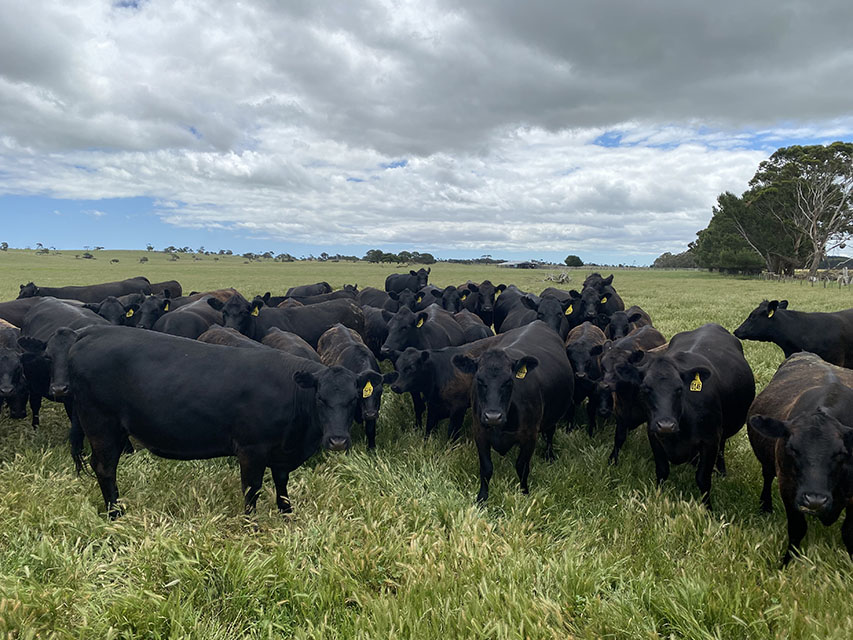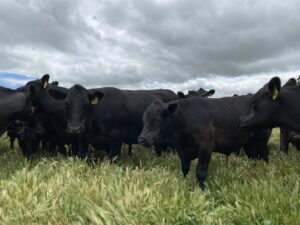Packing a punch for Wheals


One thing that can be said about Mark Wheal is he knows how to grow something delicious.
Mr Wheal, his wife Kate and daughters Lily, 6, and Willow, 3, Wheal Farms, Beachport, South Australia, run a thriving Angus herd on their coastal property.
But this is only one part of what the family produce – they also run certified free-range pigs for their brand Beachport Berkshires, as well as growing a diverse range of crops, including wheat, canola, broad beans and barley, and trading sheep.
Not only does grain go towards feed for the pigs, but the barley also makes its way into their unique beer and gin, which is created at their Beachport Brewing Co premises, directly opposite Beachport Jetty.
Mr Wheal grew up on the family farm, and now has taken over running the property from his parents Guy and Sue Wheal.
He has always been proud of his parents’ progressive take on farming. His parents founded and used to run Limestone Coast Lamb.
“Through his research and camaraderie, Dad changed the industry forever,” he said.
When it came to cattle, his dad ran a range of breeds and was one of the first farmers to import Simmental genetics from Europe, but Mr Wheal was keen to focus more on Angus cattle.
“The genetic development Angus Australia has made is far ahead of other breeds. It has done a good job on marbling and intramuscular fat (IMF). You can’t deny the dollars Angus make.”
He said Angus was an impressive breed in its own right, but when crossed with another, the hybrid vigour it brought was unbeatable.
Mr Wheal is particularly focused on eating quality.
“We want to produce the highest quality product we can,” he said.
“If you are going to use Angus, you need the best Angus. With the Australian environment, you need an animal that can walk and eat.”
“If you are going to produce beef, you need IMF to maximise return. People need to be rewarded for genetic gain.”
When looking for genetics, Mr Wheal wants balance.
“It is a balancing act between 400- and 600-day growth, birthweight, IMF and EMA, but I do put more emphasis on IMF and EMA, as well as milk production. We are always trying to find that balance – an even spread of really nice traits. We want all-rounders.”
 In a bull, Mr Wheal wants to see “muscle and meat in all the right places”.
In a bull, Mr Wheal wants to see “muscle and meat in all the right places”.
“I want him smaller in the front end, and then deep in the hindquarters, like an arrow,” he said. “If you have more meat in certain areas, you get higher value cuts.”
Today the Wheal family runs about 500 breeders, which are mostly Angus. Cows are joined to calve in autumn for six weeks, while heifers are joined for five weeks. All breeders are later pregnancy tested.
Calves are usually weaned about six months old in November, depending on the season. Handling is really important to the Wheals, so the weaners are walked through the yards and worked to become used to people.
The weaners are rotationally grazed on perennial pastures through the summer. Lucerne is an important part of the program. “Dad was a lucerne grower. Over the years he developed his own genetic line of seed which we still use today,” he said.
Mr Wheal aims to be producing EU grass-fed Angus cattle that weigh about 470 kilograms at 12 to 15 months old. The steers have been regularly sold to Thomas Foods Feedlot or more recently to Teys.
The Wheals feel positive about breeding Angus.
“At the end of the day, the future of the cattle industry is looking good, especially with the quality of Angus genetics being developed.”
By Julia Wythes, The Land